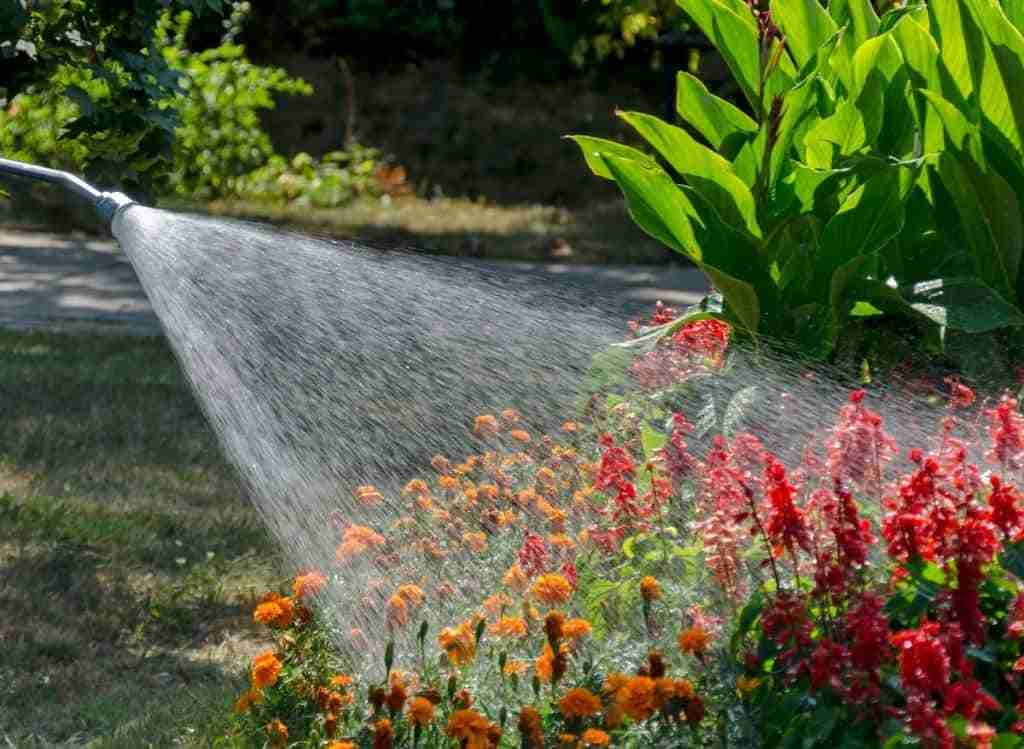
Having a garden is challenging, especially since many insects can harm your plants’ health. Sometimes, these infestations can take hold before you even realize the bugs’ presence! As soon as your plants’ health starts to decline, you must take immediate action. Solutions like GardenTech’s Sevin dust are perfect for the job.
Sevin dust’s active ingredient is carbaryl, a neurotoxin that allows the powdered pesticide to work immediately upon physical contact with an insect’s body. The dust will remain effective for up to three months after application and can be reapplied every seven days at the earliest.
Since Sevin dust is a neurotoxin, you must pay close attention to GardenTech’s instructions when using this product. This entails considering where you apply the dust, how long you should keep the area clear of people and pets, and even the weather. For more on how to properly use Sevin dust, see the overview below.
Also see: Is Sulfur Good For The Garden? Pros & Cons Of Using It
How Long Does It Take for Sevin Dust to Work?
This broad-spectrum powder insecticide, also known as carbaryl, is designed to kill over 65 insect species as soon as they make physical contact with the powder. It is a neurotoxin, meaning that its effects take hold almost immediately after the pest touches the dust. (Because of these indiscriminate effects, it is also lethal toward beneficial insects.)
While the neurotoxin can have immediate effects, you may not see the full, desired results for a few days or even weeks. You must give Sevin dust enough time to act on the entire infesting colony of insects before deciding whether it has produced the needed effects.
Fortunately, this won’t take too much work from you. With an easy sprinkle of Sevin dust onto your garden plants, you will start seeing the results straight away. The application does not require that you mix any additional pesticides, liquid, or soil. Shaking the dust directly onto your plants’ affected sites is enough to help the pesticide take hold.
For the best results, GardenTech, the Sevin-5, Ready-To-Use Dust producer, suggests that you only apply this fast-acting powder on plants that are “below chest height.” Anything taller than that should be treated with their liquid solution instead.
Also see: Will Frost Hurt Your Mums? Here’s The Truth!
What Is The Best Way to Apply Sevin Dust?
Although the GardenTech demonstration shows the user sprinkling the solution on all the flowers and foliage in their garden, this is not the most effective application method. While Sevin dust is a non-systemic insecticide (meaning that the plant does not absorb the chemical into its foliage, petals, or elsewhere), this can be dangerous for the plant’s health.
Remember that destructive insects are not the only ones physically interacting with your plant. If you were to apply the dust to areas outside of those listed below, you could be presenting a direct threat to the insects that are helping pollinate and sustain your garden.
- Tops and bottoms of affected leaves
- Bases of stems
If you get the product on the foliage, don’t worry too much:
- Tap the leaves to shake them away and onto the ground.
- To ensure continued defense against detrimental insect populations.
- Reapply the dust during dry weather, as rainy days can wash the product away, leaving your plants defenseless.
- For the same reason, you must apply it before watering and leave at least seven days between applications.
Also see: 5 Succulent Christmas Ornament Ideas For Diy Enthusiasts!
How Long Does Sevin Dust Last After Application?
Sevin dust will remain effective for up to three months after the initial application. Still, remember that contact with water or being washed away by sprinklers or rain will either weaken or eliminate its intended effects. Since you will undoubtedly need to water your garden within those three months, you must keep a close eye on your garden and persist in as-needed applications.
If you are concerned with your and your family’s safety after applying Sevin dust to your garden, follow the tips below to prevent inhalation of the powdered pesticide.
- Wait for the dust to settle before allowing anyone near the treated location.
- Avoid using Sevin dust during windy days to reduce the pesticide’s risk of landing in unwanted areas.
Although this pesticide can have lasting effects, it’s important to remember that it works best when applied at the beginning of the infestation. Waiting too long after noticing the first insects may worsen the problem due to population growth.
This will make determining where the insects are damaging your plants much more challenging. Further, this can also reduce the dust’s effectiveness since chances are significantly higher than the dust will be applied to the wrong areas or that it will not all affected sites.
Also see: How Often Should You Be Watering Your Terrarium? This Often!
How Soon Can I Water After Applying Sevin Dust?
It is highly recommended that you water your plants before applying Sevin dust to your garden. Again, this is because contact with water dilutes the pesticide’s effects, potentially making it ineffective in combating any infestations. Additionally, watering your garden after applying the dust could accidentally wash the solution away, leaving your plants unprotected.
If you need to water your plants after applying Sevin dust, let the dust settle first and check the soil.
Unless it is an incredibly hot day, it is unlikely that your garden will need multiple waterings in one day. Allow at least 24 hours to pass before rehydrating your garden.
Also see: Can Succulents Grow in Shade? Here’s the Truth

How Often Should I Apply Sevin Dust?
As mentioned above, the earliest you can resupply your garden with Sevin dust is seven days following the initial application. Still, not all gardens are the same; some may need the pesticide much less than others. Watch your garden closely and note any detrimental insects’ presence before adding another application of the powder.
GardenTech also recommends paying close attention to the weather forecast and time of day before dusting your plants. Follow the recommendations below to ensure your applications are as useful as possible:
- Apply Sevin dust in the morning or even for hours. The wind is most likely to remain calm during these times, so this is the best opportunity for accuracy and safety in your application. Additionally, beneficial insects are known to be most active during daylight hours, which minimizes your chances of accidentally harming those species.
- Verify that no rain is predicted for the next 24 to 48 hours. This ensures that the product will not be washed away.
The frequency of application depends on your garden’s specific needs and the prevalence of harmful insects in your garden. Carefully monitor your plants and follow the label’s instructions for the best possible results.
Also see: How Often Should You Be Watering Your Terrarium? This Often!
What Are the Risks of Applying Sevin Dust?
Although it is intended for insects, Sevin dust’s active ingredient, carbaryl, does present serious risks to humans and domestic animals.
The dangers of this chemical are the primary reason why you must follow GardenTech’s instructions closely when using this product.
The possible effects of inhaling or making physical contact with carbaryl include (1):
| Acute Effects of Carbaryl | Chronic Effects of Carbaryl |
| – Impaired central nervous system (CNS) functionality – Nausea – Vomiting – Contraction of the bronchus and other respiratory failures (respiratory pathway) – Blurred vision – Convulsions – Coma – Skin and eye irritation | – Headaches – Memory loss – Weakness and cramping in muscles – Anorexia due to cholinesterase inhibition (cholinesterase is a critical CNS enzyme; Source: Extension Toxicology Network) – Adverse kidney and liver health effects |
It’s important to note that these effects can be reversed as long as the conditions are treated as soon as possible.
Does Rain Wash Away Sevin Dust?
Rain generally washes away Sevin dust, so it is recommended to check the weather forecast in your location before applying Sevin Dust. The rule of thumb is when using Sevin Dust or any other insecticide dust outdoors, ensure you have as many dry days as possible to allow the product to work correctly.
Sevin dust is not made to stick to the surfaces outdoors long term.
In Conclusion
Sevin dust is one of the most effective pesticides available today. As a neurotoxin, it is incredibly fast-acting, beginning to take effect on harmful insects immediately upon physical contact.
It will remain effective up to three months after application but understand that contact with water can dramatically reduce its effectiveness.

